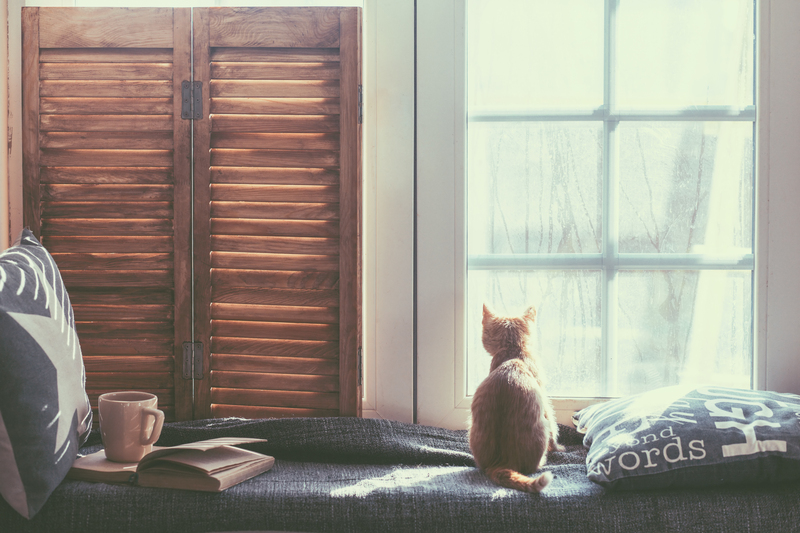How to Safely Repurpose or Recycle Your Kitchenware
Kitchenware is essential in every home, but over time, we often find ourselves with chipped mugs, scratched pans, mismatched plates, or utensils that have lost their shine. Instead of tossing these items in the trash and contributing to environmental waste, learning how to properly repurpose or recycle your kitchenware can be a sustainable and creative solution. In this comprehensive guide, we will explore safe methods for repurposing, creative upcycling ideas, the best ways to recycle different materials, and important safety considerations for both your family and the planet.
Why Repurposing and Recycling Kitchenware Matters
Reducing landfill waste should be a priority in any modern household. Each year, millions of tons of old pots, pans, plates, and more are discarded, occupying space in ever-growing landfills and taking centuries to break down. Repurposing and recycling your old kitchen items not only benefits the environment but can also save money and spark creativity. Moreover, it helps conserve natural resources and energy that would otherwise be used to manufacture new products.
Environmental Impact of Kitchenware Waste
- Ceramic and glass take thousands of years to decompose in landfills.
- Metal cookware uses valuable ore resources and can leach toxins if not disposed of properly.
- Plastic utensils and containers contribute to microplastic pollution and take hundreds of years to degrade.
By repurposing or recycling your kitchenware, you make a significant impact in reducing household waste and promoting a greener lifestyle.

Understanding the Different Types of Kitchenware
Before you decide how to dispose of your kitchenware, it's important to identify what material you are dealing with. Most household kitchen items are made from the following:
- Glass: Jars, plates, bowls, and baking dishes
- Ceramic: Mugs, plates, bowls, and bakeware
- Plastic: Utensils, storage containers, cups, and plates
- Stainless steel and other metals: Pans, pots, colanders, cutlery
Properly separating kitchenware by material type is key to ensuring that it can be successfully repurposed or recycled.
Safe Ways to Repurpose Your Kitchenware at Home
1. Transform Ceramic and Glass Dishes
- Planters and Garden Use: Old mugs, teapots, and glass jars make fantastic planters for herbs or succulents. Simply add some stones for drainage and fresh soil for a beautiful, upcycled addition to your home or garden.
- Candle Holders and Vases: Turn chipped teacups and glasses into unique candle holders or small vases for dried flowers.
- Mosaic Projects: Broken plates or tiles can be safely turned into mosaic pieces for tables, picture frames, or garden stepping stones. Remember to wear gloves and safety glasses to prevent injury when handling sharp fragments.
2. Repurpose Metal Kitchenware
- Organizer Trays: Old baking sheets and muffin tins can be used in workshops, garages, or drawers to organize screws, buttons, or craft supplies.
- Wall Decor: Vintage pans and colanders create charming wall art, especially in kitchens or outdoor patios. Clean thoroughly and consider painting or decorating for a fresh look.
- Bird Feeders: Turn metal ladles, teapots, or colanders into creative bird feeders for your garden.
3. Upcycle Plastic Kitchenware
- Seed Starters: Use old plastic cups, trays, or containers for starting seedlings before planting them outdoors.
- Kids' Crafts: Let children decorate and use old utensils and containers for craft projects or imaginative play.
- Home Organization: Use plastic utensil trays, container lids, or divided plates for storing jewelry, desk supplies, or hardware.
4. Creative Uses for Utensils and Cutlery
- Garden Labels: Flatten old spoons and engrave or paint them to mark plants in your vegetable or flower garden.
- Wind Chimes and Art: Combine mismatched knives, forks, and spoons to create sound-producing wind chimes or whimsical sculptures.
- Hooks and Handles: Bend sturdy utensils into hooks for hanging kitchen towels, pot holders, or keys.
Tips for Safe Repurposing
- Always clean and sanitize items before repurposing, especially if they will be used for food, children, or plants.
- Sand or file down any sharp edges from broken ceramics or glass.
- Use non-toxic paints and adhesives if decorating or assembling repurposed items.
- Supervise children during craft projects, especially when handling former kitchenware.
How to Responsibly Recycle Old Kitchenware
Not every item can be conveniently repurposed. For broken, heavily worn, or nonfunctional kitchenware, recycling is the next best option. Here's how to safely and effectively recycle common materials:
1. Recycling Glass and Ceramics
- Most municipal recycling facilities do not accept ceramics (like stoneware, porcelain, or Pyrex) because of their different melting points from typical container glass. Instead:
- Check for local art centers or mosaic studios that may accept broken ceramics for projects.
- Research specialized recycling services that accept ceramics.
- Glassware such as drinking glasses and cookware (e.g., Pyrex) typically cannot be recycled with food and beverage containers. Donate intact items to thrift shops or upcycle at home when possible.
2. Recycling Metal Kitchenware
- Stainless steel and aluminum pots, pans, and bakeware are accepted at most scrap metal recycling centers. Remove non-metal parts (plastic, wood, silicone) if possible.
- Some curbside recycling programs accept small metal items. Check your local guidelines before putting items in the bin.
- If your pans are nonstick-coated, contact your city's recycling program, as Teflon and other coatings pose unique challenges.
3. Recycling Plastic Kitchen Items
- Most plastics must be clean and labeled with a resin code #1-#7 to be accepted in recycling programs.
- Some plastic utensils and containers, especially those labeled #5 (polypropylene), are eligible for specialty drop-off programs like "Gimme 5."
- Recycle plastic lids separately and avoid putting plastic items in the recycling if they are heavily stained, broken, or have non-plastic attachments.
4. Recycling Cutlery and Miscellaneous Items
- Metal cutlery can go to scrap metal recyclers but should not be placed in single-stream recycling bins.
- Wooden utensils are compostable if untreated; otherwise, consider repurposing as plant stakes or craft materials.
Donation: An Alternative to Recycling
- If an item is still functional, donate it to charities, shelters, or secondhand stores. Many organizations accept gently used kitchenware for families in need.
- Host a kitchenware swap with neighbors or local community groups to give your items new life in another home.
Safety Considerations When Repurposing or Recycling Kitchenware
As you engage in repurposing or recycling, it's vital to practice safe handling and disposal:
- Remove hazardous materials. Items with nonstick coatings, paints, or adhesives may contain chemicals like PTFE, PFOA, or lead. These should only be repurposed for non-food use and recycled according to local hazardous waste guidelines.
- Avoid sharp edges. Broken glass, ceramic, or metal can cause injury. Wear gloves and use proper tools when breaking down items.
- Be aware of food contamination risks if repurposing for new kitchen or food uses. Old plastics may retain odors, stains, or bacteria if not properly cleaned.
If you are unsure about how to dispose of a specific item, contact your local waste collection authority for guidance.
Kitchenware Items That Should Never Be Repurposed for Food Use
- Cracked ceramic or glass items can harbor bacteria in the cracks or even leach lead if older.
- Plastic containers that once contained non-food substances should never be reused for food storage.
- Nonstick cookware with scratched or flaking surfaces may release toxic compounds, so avoid using for cooking or serving food.

Frequently Asked Questions: Repurposing and Recycling Kitchen Tools
Can I recycle nonstick cookware?
Most nonstick pans cannot be recycled through regular curbside programs due to their synthetic coating. However, the metal underneath is recyclable if you remove the coating and handles. Contact a local scrap yard or hazardous materials disposal center for guidance.
Are there creative ways to upcycle broken mugs?
Absolutely! Broken mugs can be turned into succulent planters, pen holders, or mosaic pieces. Remember to sand down sharp edges and avoid food or drink use.
What about recycling kitchen appliances?
Small appliances like blenders, toasters, and microwaves are classified as e-waste. Many cities offer e-waste collection events or designated drop-off spots. Remove batteries and cords when possible before recycling.
How do I prepare my kitchenware for recycling?
Clean all items, separate different materials, and remove non-recyclable parts such as plastic handles, rubber grips, or lids. Check local recycling rules for accepted items and materials.
Summary: Sustainable Kitchenware Disposal for a Greener Home
By repurposing and recycling your kitchenware, you take meaningful steps toward a more sustainable lifestyle. With a bit of creativity and awareness of safety and environmental guidelines, you can keep your kitchen clutter-free and reduce your ecological footprint. Whether you choose to transform an old teapot into a planter, donate usable dishes to charity, or recycle metal pans at a scrap yard, every effort counts.
- Repurpose creatively to extend the life of your household items.
- Recycle responsibly by following your community's guidelines and separating materials appropriately.
- Donate and swap to ensure reusability and reduce waste.
Remember: Every piece of kitchenware saved from a landfill is a victory for your home and the environment!